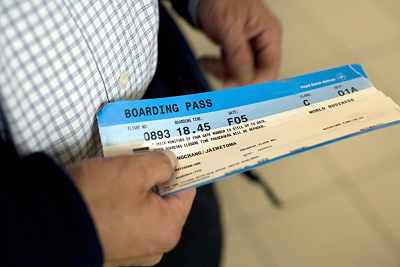 | « Back to article | Print this article |
Planning a holiday this summer? Travel closer to home
Archana Kapur's choice of international travel has been reduced to countries where the rupee has depreciated less. No wonder, she is being advised to travel to European countries, as the rupee has fallen there by just six per cent.
Then, there are some countries in Southeast Asia, like Thailand and Malaysia, where the Indian currency has fallen by around 15 per cent. The cost of travel to these destinations is very economical.
Since the beginning of the year, the rupee has depreciated substantially, hitting an all-time low of 53.83/$ on Wednesday. This implies the cost of travel has risen over 20 per cent in the last one year.
Click NEXT to read more...
Planning a holiday this summer? Travel closer to home
The math: To buy, say, $1,000 last year, you would have had to spend Rs 44,300. Whereas this year, you would have to spend Rs 53,830 – the difference is Rs 9,530. With prices of holiday packages and airfares also climbing, things do not look rosy.
The numbers are distressing. Sample this: if you were to book a 14-day package to the United States, you would have to shell out Rs 1.8 lakh (per person) this year.
A 10-day package to the United Kingdom will cost you Rs 1.2 lakh, while a 10-day package to the Far East will cost you Rs 75,000. The price of the package does not include airfare.
Click NEXT to read more...
Planning a holiday this summer? Travel closer to home
Last year, the same package to the United States would have cost you Rs 1.4 lakh, to the United Kingdom Rs 1.05 lakh and a Far East package would have cost Rs 61,110.
Visa charges, too, fluctuate according to currency movements. The cost of a visit visa to Malaysia has increased to Rs 800 this year, from Rs 750 last year.
To the UAE, it has increased to Rs 4,150 from Rs 3,650 and to the UK, it has risen to Rs 7,050 from Rs 6,650. For the USA, it has increased to Rs 8,640 from Rs 7,560. The exchange rate that consulates use is slightly higher than the prevailing rates.
Click NEXT to read more...
Planning a holiday this summer? Travel closer to home
P R Srinivas, an independent travel analyst, says the movement of the rupee does play a certain part when people decide on their holidays.
"When the rupee depreciates, it becomes much more expensive on the whole when you are booking hotel rooms and tickets and so on, for the entire family," he says. The longer the holiday, the more expensive it will be, he adds.
So, what are the options that someone like Kapur have for their holiday this year? Rajiv Duggal, managing director, Kuoni India says Southeast Asia is an all-time favourite and an affordable destination. Thailand, Singapore, Malaysia, Hong Kong and Mauritius are affordable favourites, too, he says.
Click NEXT to read more...
Planning a holiday this summer? Travel closer to home
For the value-driven mass market and first-time travellers, the preference is international destinations in closer proximity, where the total cost of the package is lower, says Madhav Pai, chief operating officer, Leisure Travel (Outbound), Thomas Cook (India).
"With movement in the rupee, short-haul destinations like Dubai and Sri Lanka offer great value in a price-sensitive scenario," he says.
Though the rupee has indeed depreciated against the currencies in the above mentioned countries, these are comparatively economical options. Especially, in a year when one is unlikely to get great salary rises, it could make sense to travel closer or perhaps, even locally. Probably next year, the rupee could appreciate and you could plan in advance to get a better deal.





